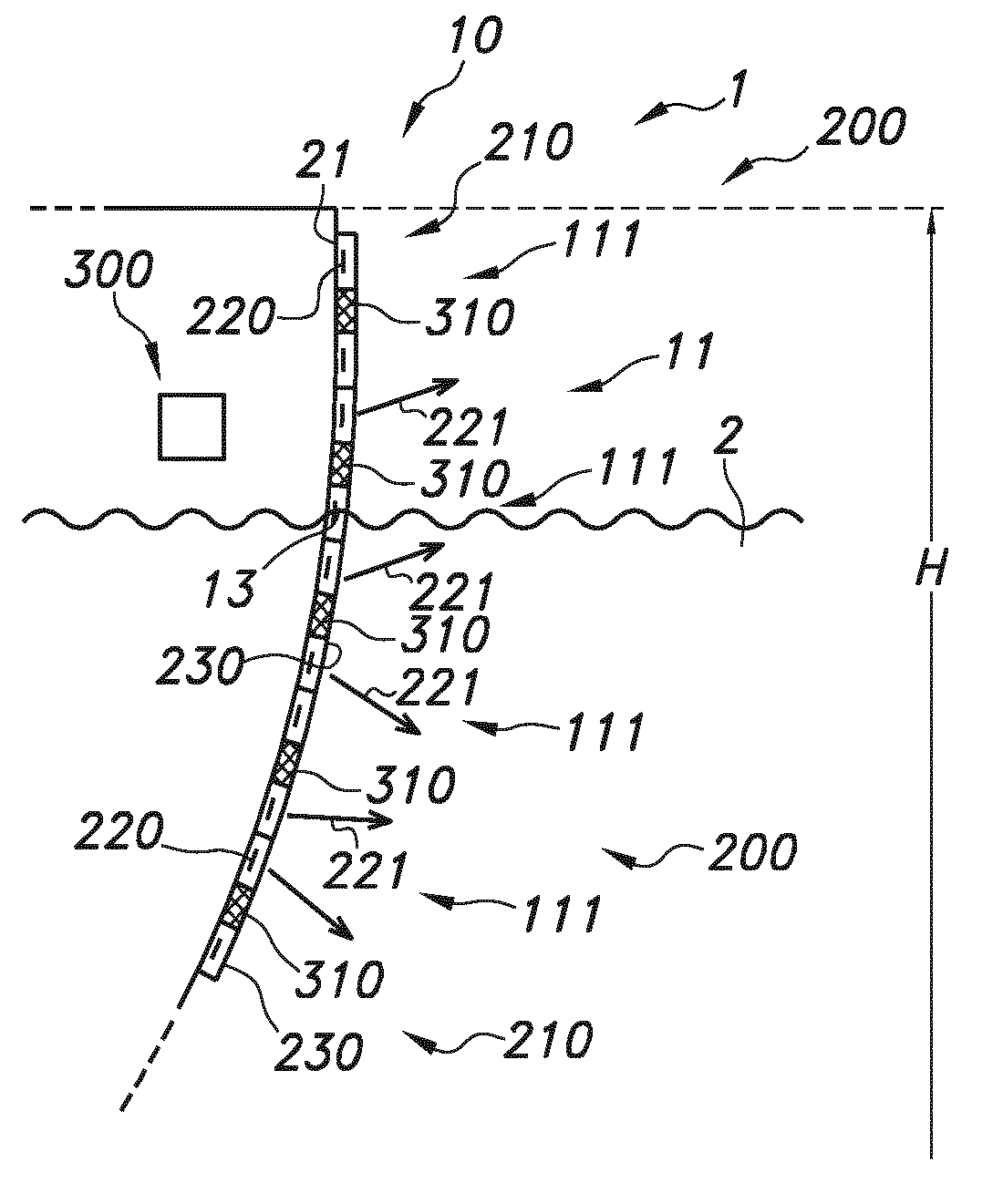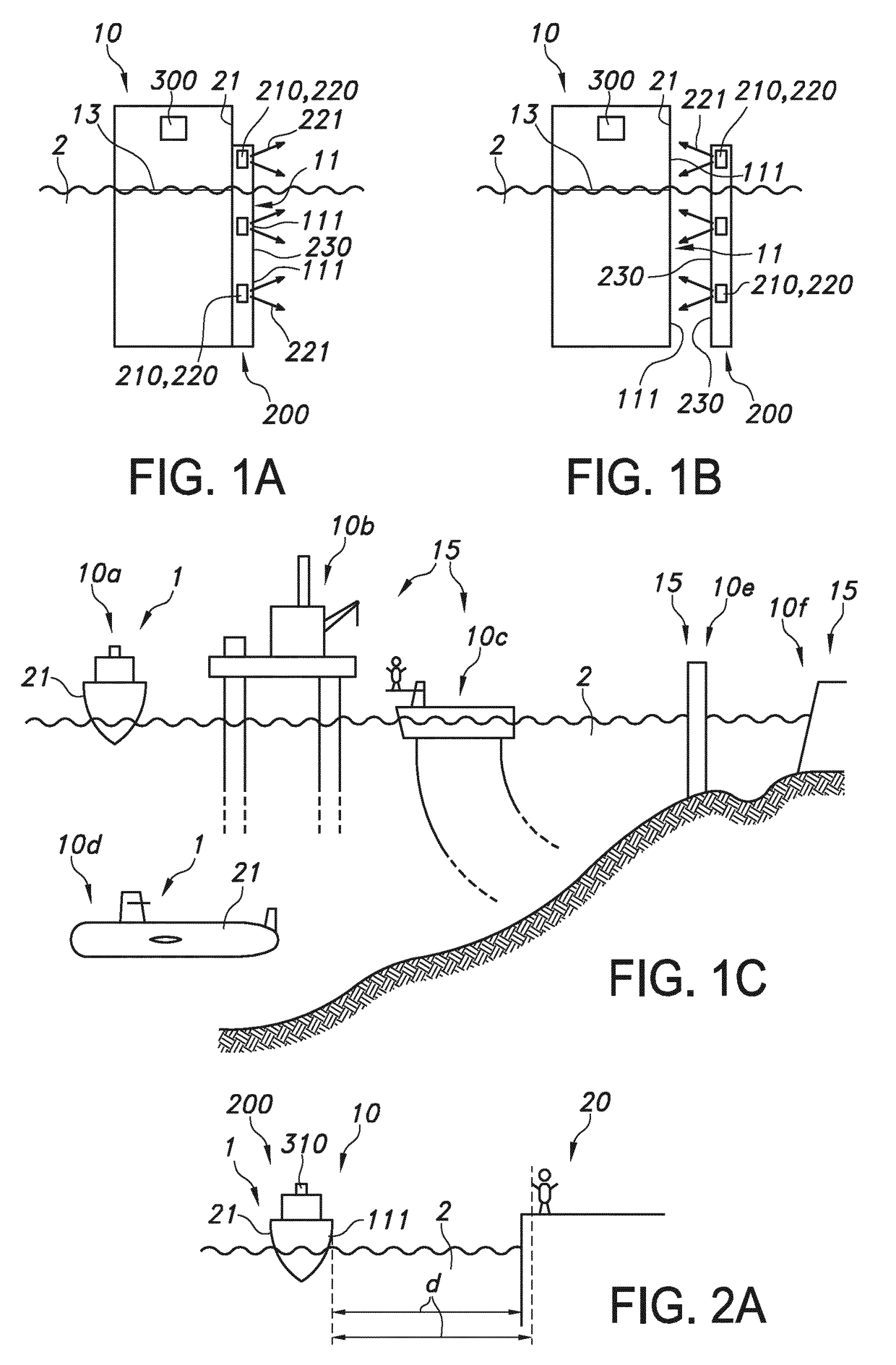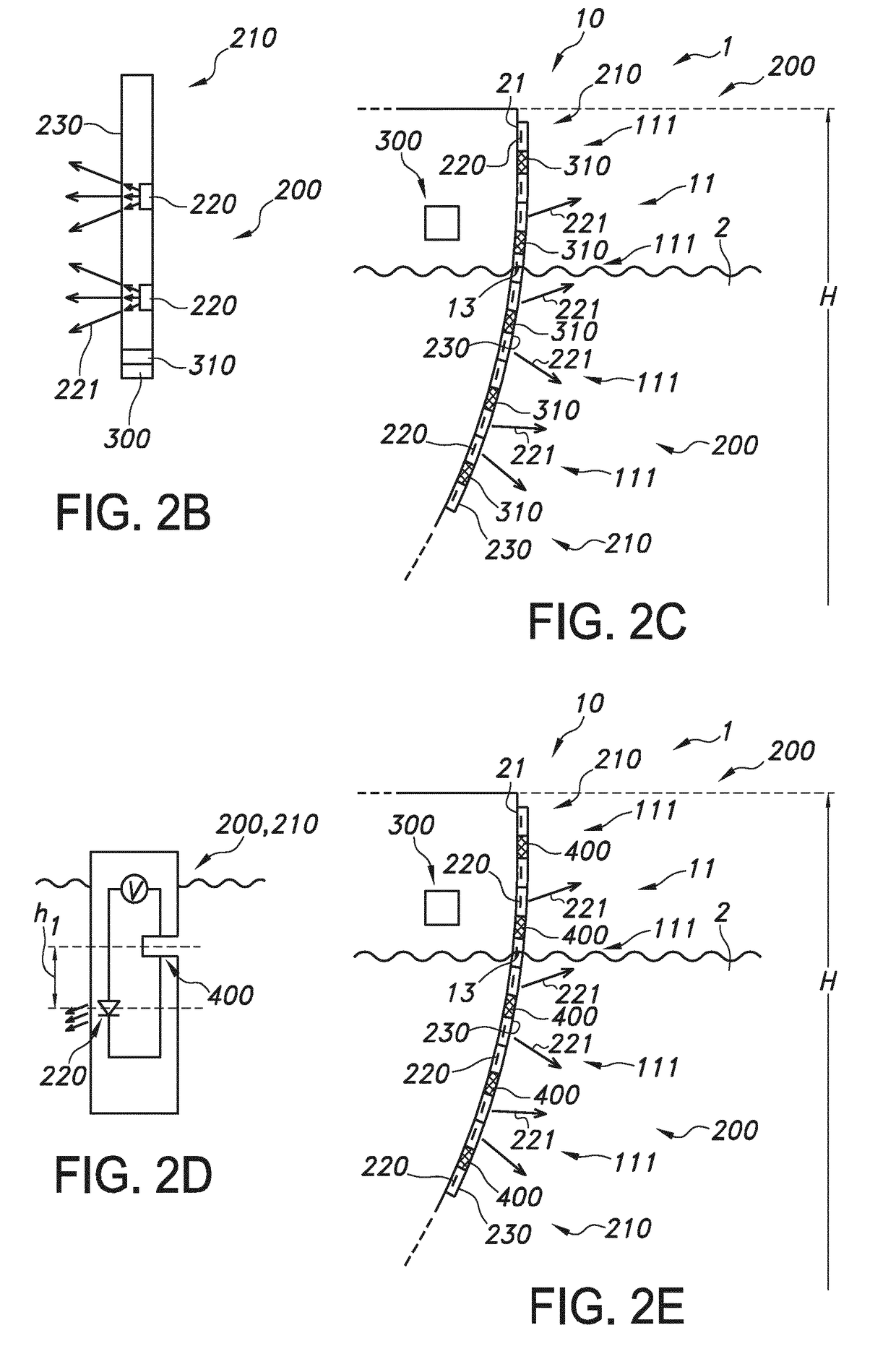Safety improvements for UV radiation in aquatic applications
a technology for uv radiation and aquatic applications, applied in the direction of disinfection, transportation and packaging, vessel construction, etc., can solve the problems of clogging water inlets, affecting the safety of aquatic aquatic applications, and causing substantial problems such as biofouling
- Summary
- Abstract
- Description
- Claims
- Application Information
AI Technical Summary
Benefits of technology
Problems solved by technology
Method used
Image
Examples
Embodiment Construction
[0079]FIGS. 1a-1b schematically depict embodiments of an object 10 that during use is at least partly submerged in water 2, see the water line 13. The object 10, such as a vessel or a sluice, see also below, further comprises an anti-biofouling system 200 comprising an UV emitting element 210, especially for application of UV radiation 221 to a part 111 of an external surface 11 of the object 10, such as a hull or part or a hull. Here, two embodiments are shown wherein the anti-biofouling system 200, or more especially the UV emitting element 210 is part of an outer surface, and thereby forms in fact part of the outer surface (FIG. 1a) or wherein the UV emitting element 210 is configured to irradiate the outer surface and does not necessarily form part of an outer surface, such as a hull of a ship (FIG. 1b). For instance, the object 10 is selected from the group consisting of a vessel 1 and an infrastructural object 15 (see also below).
[0080]The UV emitting element 210 comprises one...
PUM
 Login to View More
Login to View More Abstract
Description
Claims
Application Information
 Login to View More
Login to View More - R&D
- Intellectual Property
- Life Sciences
- Materials
- Tech Scout
- Unparalleled Data Quality
- Higher Quality Content
- 60% Fewer Hallucinations
Browse by: Latest US Patents, China's latest patents, Technical Efficacy Thesaurus, Application Domain, Technology Topic, Popular Technical Reports.
© 2025 PatSnap. All rights reserved.Legal|Privacy policy|Modern Slavery Act Transparency Statement|Sitemap|About US| Contact US: help@patsnap.com



